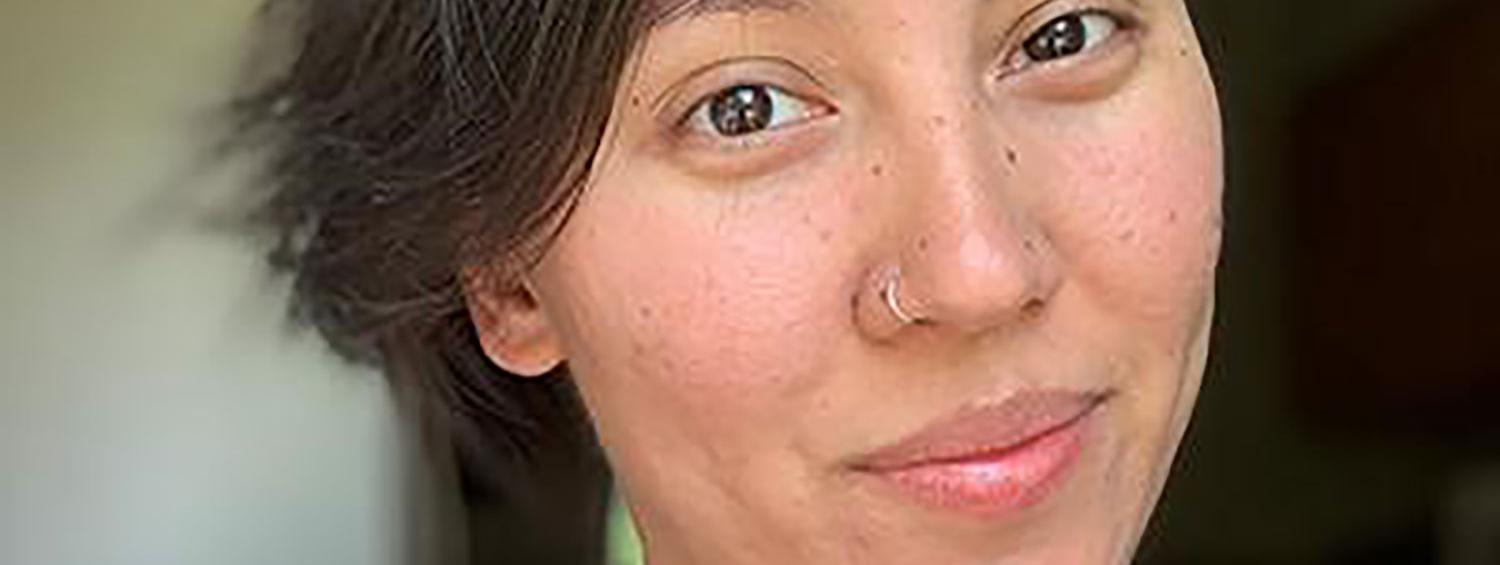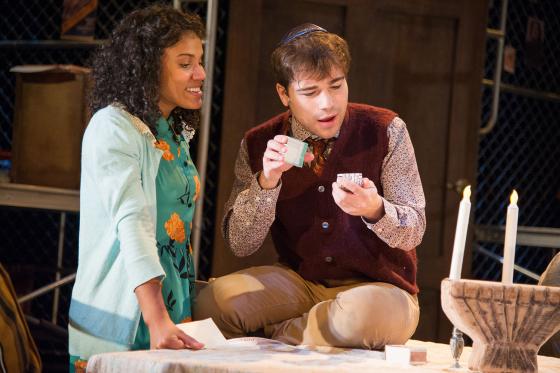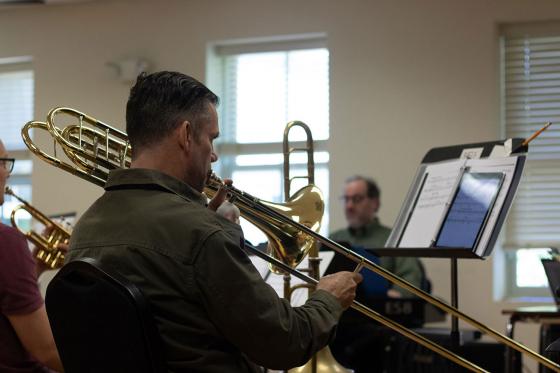Education Apprentice, Hannah Ensign sat down with The Royale projections designer, Kelly Colburn, to talk about her work and the evolving field of theatrical projections.
What are the main responsibilities of a projections designer?
The Projections Designer, like any designer in theatre or dance, is first and foremost responsible for serving the story, guided by the vision of the director. They are also responsible for effectively and positively communicating ideas to their fellow designers and collaborators as well as setting goals for the work they are about to create and meeting those goals to the best of their ability.
How would you describe the function of projections design within the production?
Projections design is the most fluid and fascinating of the theatre disciplines because it has the ability to take many forms. It can act as scenery, it can act as light, but it can also enhance, elevate, and give form to those things that are more difficult to see -- like memory, or emotion, or history. Because it can take many forms and each theatrical process is different, it is difficult to assign one description to it. Overall Projections, Multimedia, and Video design for the theatre is the use of technology and the combination of cinematic and theatrical principles to enhance the visual and emotional landscape of the story.
Here are some ways well-respected Projections Designers in the field describe it:
- “At best, projections design is augmenting reality. At its worst, it’s window dressing” - James Sugg, Mountaintop
- “Projections Design is finding new ways of using technology in live performance to tell stories.” - Leo Warner, founder of 59 Productions.
- “They’re best when they blend and collage with lighting -- when you don’t know what’s lighting and what’s projections.” - Elaine McCarthy, Wicked
- “[They’re] exciting when they completely transform the world [without] distracting from what’s happening on stage” - Kate Freer, Colleidoscope
- “[Multimedia] works best when it connects itself to the dramaturgy of the piece and propels the story forward. It arrives on it’s own and leaves on it’s own.” - Jared Mezzochi, Vietgone
How did you discover and decide to pursue projections design as a career?
First off, I think of myself as an artist first and a projections designer second. I grew up with a myriad of interests that were cultivated and honed in college. At NYU, I was particularly interested in mixing my two favorite art forms -- theatre and film -- to see how we could make the live performance as exciting as something pre-made like cinema. This push and pull between live the live and cinematic has become the joyful challenge of my artistic inquiry as a designer, director, performer or sometimes all three in the same room. I pursued a career in theater because it allows me to ask questions about humanity through a collage of art forms. I’m pursuing a career as a projections designer to interrogate humanity through a different perspective, one that is inherently tied to the rapid advancement of technology not just in the field, but in the world.
Can you walk us through a brief timeline of your design process?
- Read the script for fun.
- Emotional Research (find visuals that evoke the spirit, mood, or emotion of the piece)
- Meet with the director to understand their vision
- Read the script again.
- Meet with the director and design team to understand the vision of the play and how each discipline (lighting, scenic, costumes, sound, and projections) can tell the story. Where do the themes and stories overlap? Where and when does one discipline tell the story better than another?)
- Read the script again
- Historical Research (understand the time in which the play takes place, understand the time in which the playwright and company developed the piece, understand who (if any) these characters are based on.)
- Develop a visual language using historical research and emotional research in the form of storyboarding and demos.
- Meet with the technical team to figure out how to bring the visual language to life (What are the surfaces we will project on? What equipment do we need in order to do that?)
- Read the script to create a cue list that doubles as my to do list for content creation.
- Continue to communicate with design and technical team on developments throughout the pre-production and technical rehearsal process.
- Challenge myself as an artist to continually serve the needs of the story and not my own ego.
What is the research process like for projections design?
Research for a projections designer is no different than research for any other department. Before I know what language or theme of the piece I will be speaking to, I always do emotional and historical research to understand what life was like for these characters, what life was like for the playwright developing the piece, and where I sit in relation to those two perspectives.
Do you think there are certain kinds of plays/musicals that lend or do not lend to the use of projections design? What kinds?
I believe that projections can exist in any story if it is present to serve and not distract. If it can be fully integrated and tethered to a character or a theme that helps enhance or reveal more about the piece than just the text will let on, then the possibilities and the beauty of those possibilities are endless. You would never ask a lighting or costume designer if there are certain types of pieces that lend or do not lend to the use of their design-- it all depends on what story you want to tell. A shiny sequined dress at first hand may not lend itself to Ophelia in Hamlet, unless this particular Hamlet takes place in Las Vegas and Ophelia is wearing this outlandish dress to garner Hamlet’s attention. Projections can find their way into any story so long as it is there to serve the story.
This field is newer that others in the design cannon. What advancements do you think have been made in the past couple of years and what do you see advancing in the coming years?
We have professional grade cameras in our phones. There are self-driving cars tested on the roads. We are running off solar energy. LED’s make theaters more energy-sustainable institutions. Projectors are getting bigger, brighter, eco-friendly, and more affordable. Computers, lightboards, and sensors can all talk to each other through wifi. We can airdrop items instantly between devices. We can talk to people across the globe. Between theater and global advancements -- We have not yet seen the possibilities to come. If technology like infrared camera tracking or kinects can communicate with computer-code generated visuals to create truly interactive environments is old news -- I can’t wait for what’s going to happen next.
Box Office: 301.924.3400
Open Wednesday - Sunday: 12:00 PM - 6:00 PM






